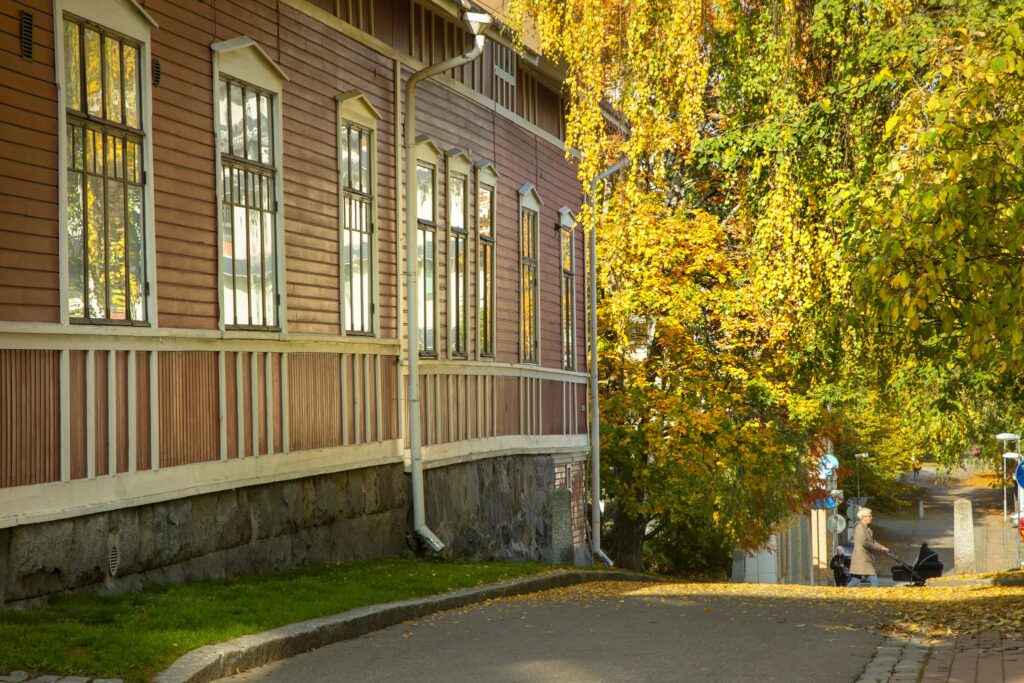Rännikadut (Alleyways)

These unique narrow alleways (width 7.2 m) that are an essential part of Kuopio street network, have gained the name “Rännikadut”. The name is probably purely Kuopio-born, as this concept has not been used elsewhere in other cities.
In 1776, King Gustav III approved the town plan drawn up by Pehr Kjellman for the city to be founded on Kuopionniemi peninsula. This plan drawn by Kjellman is the basis of Kuopio’s current grid structure. In that earliest town plan, the main streets had names. The narrower streets, sometimes running in the middle of a block, were simply called “gränd” (meaning alley”), which is generally considered to be the etymological origin for the word “rännikatu”.
According to the general perception, “rännikadut” were specifically fire alleys (“brandgata” in Swedish), which were built to prevent the spread of fires in wood-built towns. According to another interpretation, streets of different widths were planned to help in clarifying the city structure. Evidently, the “rännikatu” alleyways did not yet have a practical use as thoroughfares in the sparse urban structure, but were used as additional land for plots.
These alleyways were originally – and in many cases, still are – clearly side streets. Public buildings and bourgeois houses were located alongside the main streets, whereas the alleyways were reserved for craftsmen and workers. Efforts were also made to place the residential building of the plot along the main street, and the household buildings faced the alleyways. The houses were built close to the streets and the plots were fenced. These alleyways were not usually paved with cobblestones, but had a gravel surface. Even later on they did not get separate sidewalks. The appearance of a “rännikatu” was simplified and ascetic.
The “rännikatu” alleyways are currently an important part of the city centre’s pedestrian and cycling network and most of them have been designated for walking and cycling. Only necessary service drives and driving to a plot is allowed. The general appearance of these alleyways has been improved by renovating asphalt surfase to make them more comfortable, for example by paving, adding plants and greenery, and introducing street furniture.